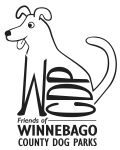 Here are some tips to winter proof your dog paws from salts and cold from CesarsWay.
Here are some tips to winter proof your dog paws from salts and cold from CesarsWay.
Winter can be brutal on our dog’s paw pads. Exposed to the elements and toxic chemicals, the paw pads are at risk for drying, cracking, trauma, frostbite and chemical burns. Luckily, there are some tips and products out there that can help keep your dog’s paws happy and healthy this winter.
Many protective balms are available to help protect your dog’s paws, and even some human products can do the trick. Do your research. Once you find the balm that you like, take these steps:
Before using the balm, make sure the paw is ready. Good grooming is essential for healthy winter feet. If your dog has long hair use a clipper (beard trimmer with the shortest plastic guard equipped works well) to keep the hair between the paw pads short so that it is even with the pad. Trim the hair around the paws especially if they have a lot of feathering to make sure none of the hair comes into contact with the ground. This will help prevent ice balls from forming between and around the paw pads which can be painful and result in trauma. It also makes it easier to apply the balm to the pads. Keeping the nails trimmed is important year-round but even more so in the winter because long nails force the paw to splay out and make it more likely that snow and ice will accumulate between the paw pads.
Apply a thin even layer of balm just before going out for a wintery walk. After the walk wipe your dog’s paws with a warm washcloth to remove snow, ice and ice melt. Then apply another layer of balm to soothe any irritation and to keep them from drying out. Bag Balm can be found in most drug stores and pet stores. If you can’t find Bag Balm then Vaseline is an acceptable alternative.
Another good option to protect your dog’s paws is dog boots. These boots are made by various manufacturers and can be easily found online and in pet stores. They consist of a sock like boot with a Velcro strap to help keep them in place. Some have soles which provide the additional benefit of adding traction. These boots protect the paw by helping them stay dry and preventing exposure to salt and de-icers. Be sure to check that the strap is not too tight; the boot should be snug so that it doesn’t slip off but not so tight that it constricts the paw. Dogs tend to not to like wearing the boots at first so acclimate them to wearing them by putting them on your dog for short periods of time in the house. Praise them and gradually increasing the length of time as they get used to them.
Be aware that salt and most de-icers can be toxic to our canine friends. Try to keep your dog away from roads and sidewalks that have been heavily treated with salt and chemical de-icers. There are pet friendly de-icers available for use on your own sidewalks and driveway and you should encourage your neighbors to do the same. Immediately after a walk, wash your dog’s paws with warm water as described earlier to help prevent them from ingesting any salt or chemicals that may be on their paws. While outdoors, do not let your dog eat slush or drink from puddles near heavily treated roads and sidewalks.
Dogs are susceptible to frostbite and hypothermia just as people are so use common sense as to how long your walks can be. Keep them short and watch for signs of hypothermia such as shivering, anxiety and moving slowly.
Winter can be tough on our dog’s feet but good grooming and protecting the paws by using a balm or booties will go a long way to keeping your dog’s feet healthy.
Read more: http://www.cesarsway.com/dog-care/dog-health/Winter-Proofing-Your-Dogs-Paws#ixzz2pmPa5rYd
 Yield: About 2 dozen small treats
Yield: About 2 dozen small treats









